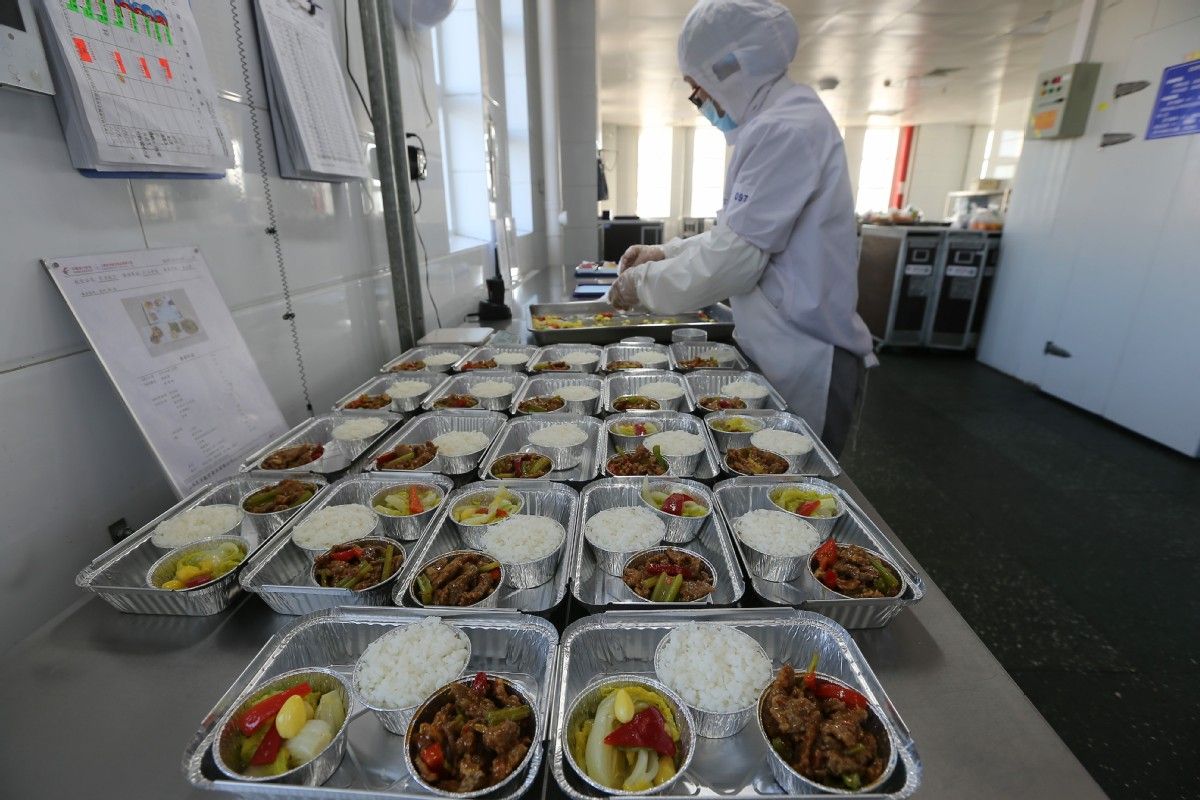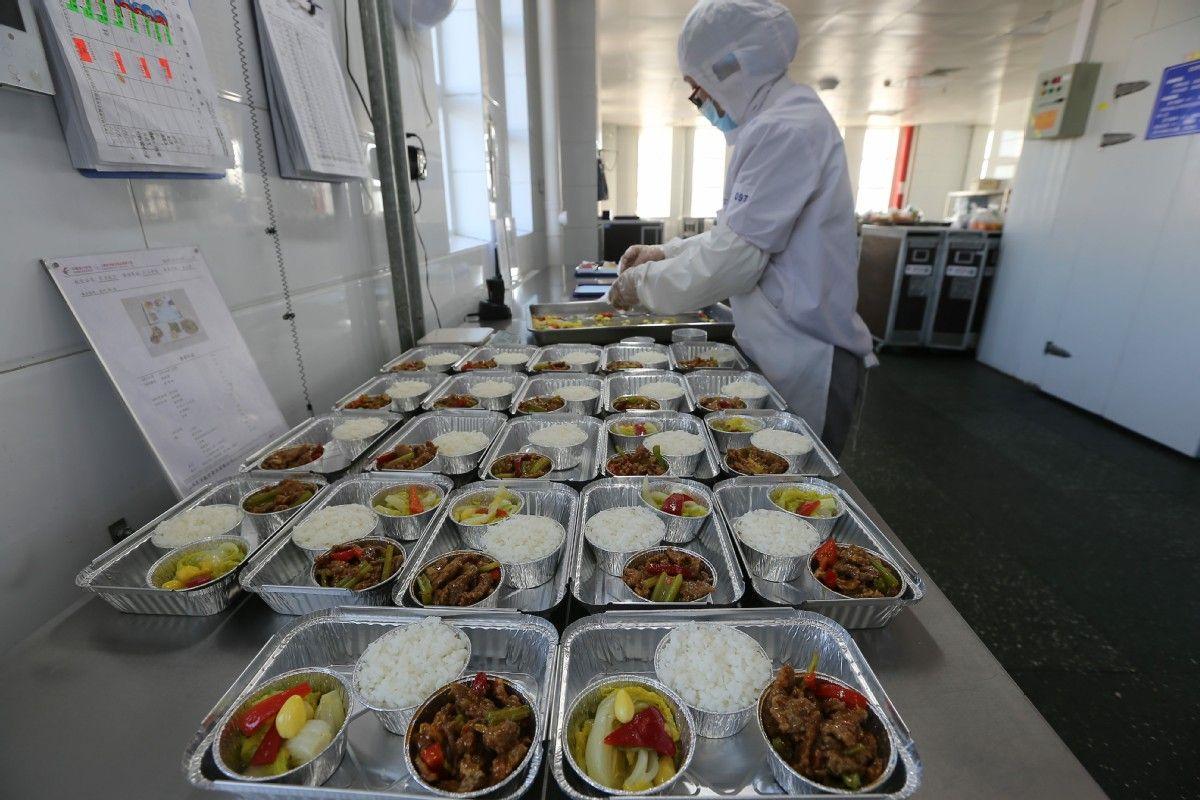
An employee from China Eastern Airlines prepares in-flight meals at the company's branch in Taiyuan, Shanxi province. ZHANG YUN/CHINA NEWS SERVICE
More domestic carriers are introducing enhanced complimentary in-flight meals to attract passengers while also taking various measures to help avoid food wastage.
The moves are in response to a call from the government's campaign to help prevent future potential food supply uncertainties due to the COVID-19 pandemic, with the public now turning their collective focus to China's food security.
Haikou-based Hainan Airlines recently introduced a special trial service on six of its domestic flights. By giving up certain in-flight meals in economy or business class, passengers will be able to collect corresponding frequent-flyer points.
The points can be accumulated for future rewards, including redeeming them for flight tickets or cabin upgrade requests. The number of redeemable points depends on cabin classes and meal types.
The six routes include flights from Shenyang, Liaoning province, to Xiamen, Fujian province; Xi'an, Shaanxi province, to Haikou, Hainan province; and Hainan's Sanya to Zhengzhou, Henan province.
Hainan Airlines said such options would help contribute to environmentally friendly travel by minimizing food wastage.
"In the post-pandemic era, the emergence of new consumption habits is an important factor in pushing forward market transformation. We would like to keep passenger options open and comply with demand," it said in a statement.
Shanghai-based China Eastern Airlines introduced a new management model by calculating the amount of in-flight meals and food needed based on big data analysis.
Previously, it provided enough meals for fully occupied flights. Now, however, the carrier offers a number of meals based on the actual number of passengers, and it adjusts the quantity flexibly according to changes.
"In the past, there was a certain amount of waste of in-air catering since meals need to be prepared several hours in advance and carriers usually prepared some backup meals for last-minute ticket buyers," said Lin Zhijie, an aviation industry analyst at Carnoc, one of China's largest civil aviation websites.
"With big data estimations based on schedules, historical occupancy rates and the ratio of passengers who had meals on different flights, it can help forecast demand of in-flight meals and reduce waste," Lin said.
With refined management, the in-air catering of China Eastern has significantly reduced food wastage in the process of purchase, storage and cooking. At Eastern Air Catering's Shanghai processing plant-the meal supplier for China Eastern-the workshop is able to save some 100-150 kilograms of food daily, the carrier said.
China Eastern has adopted the new in-air catering model for economy class passengers on more than 25 domestic flights. It has also adjusted the composition of dishes for flights operated in different time periods and flying durations.
For long flights that don't cover regular breakfast, lunch or dinner time slots, China Eastern will provide packaged in-flight meals in gift boxes.
The boxes contain foods such as cake, bread, fruit and dessert, and are convenient to carry. Thus, they can help avoid food wastage if passengers are unable to finish eating the meals on board.
Meanwhile, domestic carriers are offering more in-flight meal options to cater to the appetites of passengers, and thus trying to prevent food wastage due to spurned offerings.
First class and business class at China Eastern recently introduced dishes such as peeled shrimp, ribs and pork balls with crab sauce. For economy class passengers, food options such as rice with bean curd and pork, rice with tomatoes and stewed beef and noodles with pickled vegetables and shredded pork will be available, the airline said.
Xiamen Air recently launched an all-day brunch choice for its first class and business class travelers on short-haul flights. The carrier will provide its newly developed sandwiches, along with fruit, yogurt and nuts.
(Source: China Daily)




 A single purchase
A single purchase









